You may not know this, but there are two distinct dog breeds known as the American vs European basset hound. While both of these dogs are essentially identical, are there any traits or distinguishing features that separate them from one another? Should you learn how to tell a European basset hound apart from an American basset hound?
In this article, we will address everything you need to know about both the American basset hound and the European basset hound. We will discuss their appearances as well as their sizes, to see if there were any differences. Finally, we will address their ancestries and Behavioral personalities, to see if you can tell them apart. Let’s get started and learn about basset hounds now!
Comparing American vs European Basset Hound
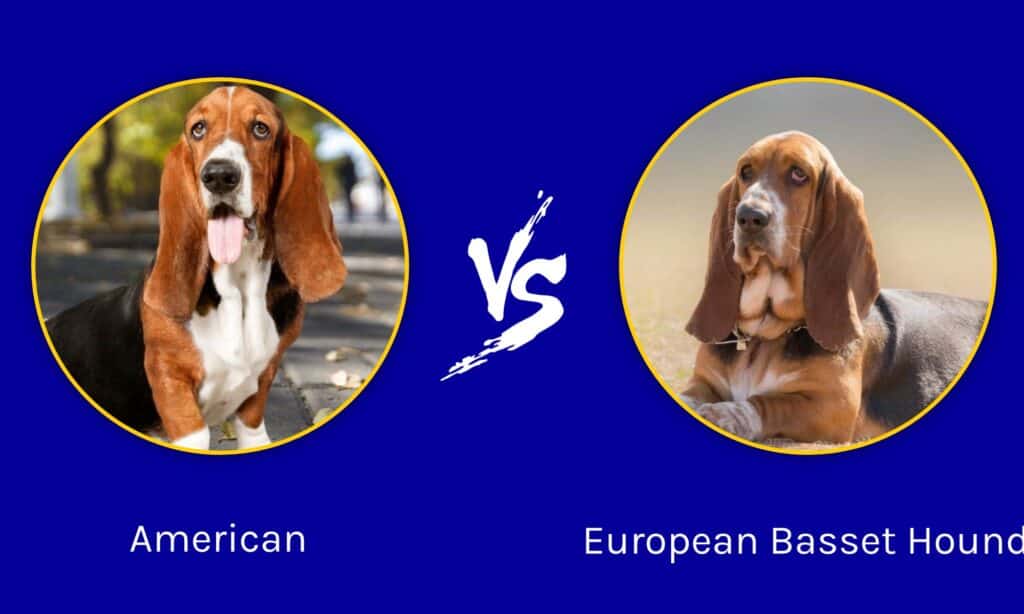
| American Basset Hound | European Basset Hound | |
|---|---|---|
| Size | 11-15 inches tall; 40-80 pounds | 10-15 inches tall; 35-75 pounds |
| Appearance | Long bodied with short and stubby legs. Incredibly long, floppy ears and drooping expression. Only comes in brown, red, black, and white colorations. | Identical to the American basset hound, though tends to have more wrinkles around the face and eyes. Expression looks more like a bloodhound– more sad and droopy |
| Ancestry | Brought to the USA during the 1800s; recognized as an official breed by the AKC during this time | Originally bred in France and dates as far back as the 6th century. Bred as a hunting and scent hound for finding hares |
| Behavior | Friendly, silly, and intelligent, though can be extremely stubborn during training and if they don’t have a firm hand. Highly food motivated, though does need to be monitored for weight issues | Identical to the American basset hound in every way, behaviorally speaking |
| Lifespan | 10-12 years | 10-12 years |
Key Differences Between American vs European Basset Hound
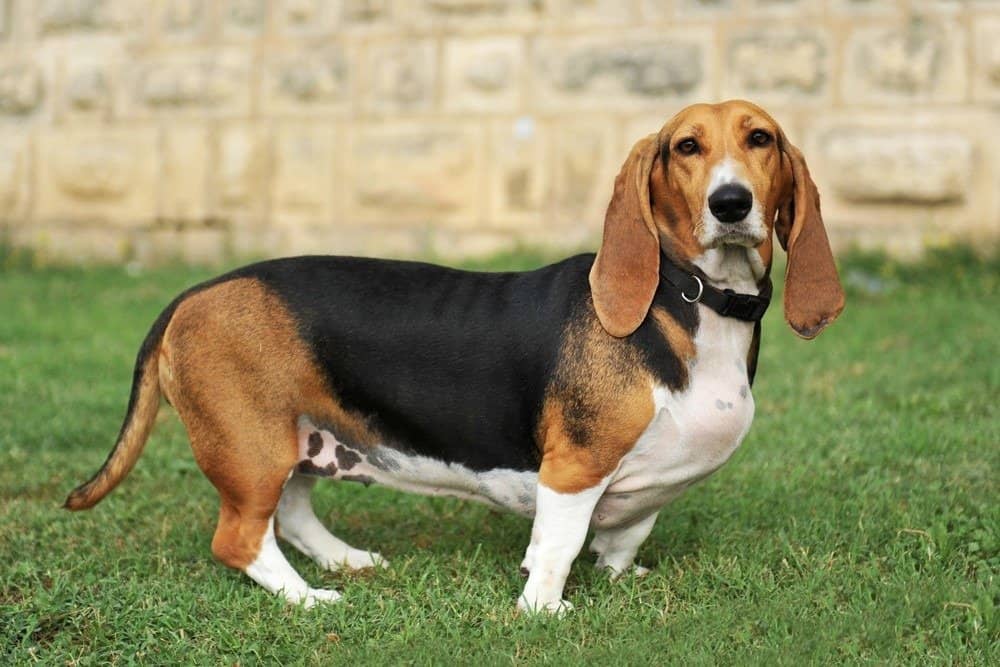
The European basset hound originated first, with the American basset hound becoming official in the 1800s.
©cynoclub/Shutterstock.com
There are very few differences between an American basset hound and a European basset hound. For example, both of these dogs are roughly the same size, though the American basset hound grows just slightly larger than the European basset hound. Additionally, the European basset hound originated first, with the American basset hound becoming official in the 1800s.
Let’s go over all of the details and things that separate these two dogs from one another now.
American vs European Basset Hound: Size

The American basset hound grows ever so slightly larger than the European basset hound.
©Ewa Studio/Shutterstock.com
For the most part, there is no difference between the size of the average American basset hound versus the European basset hound. Both of these dogs are built extremely similarly, with short legs and long bodies. However, the American basset hound grows ever so slightly larger than the European basset hound, though only by an inch in height and roughly 5 pounds, respectively.
Looking at the figures in more detail, the American basset hound reaches 11 to 15 inches in height, while the European basset hound averages 10 to 15 inches in height. Additionally, the European basset hound weighs an average of 35 to 75 pounds, while the American basset hound weighs anywhere from 40 to 80 pounds. However, these figures often overlap, and it all depends on the specific breeding of the individual dog.
American vs European Basset Hound: Appearance
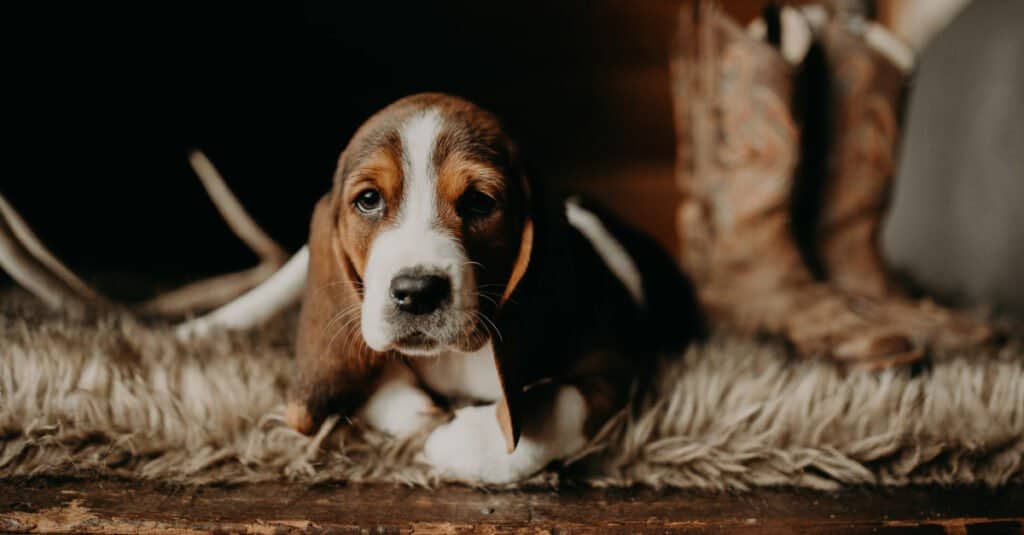
Many owners remark that the European basset hound has more facial wrinkles and a droopy or expression compared to the average American basset hound.
©iStock.com/Jessica Nystrom
You likely can’t pick out a European basset hound from a crowd of American basset hounds, and vice versa. These dogs look basically the same, from the shape of their bodies all the way to the tips of their ears. However, many owners remark that the European basset hound has more facial wrinkles and a droopy or expression compared to the average American basset hound.
Unless you are looking at two very distinct basset hounds side by side, you likely cannot tell the difference between the two breeds. They both have similar coloring as well as builds. They are otherwise identical, besides the European basset hound having a slightly sadder facial expression compared to the American basset hound.
American vs European Basset Hound: Ancestry and Breeding
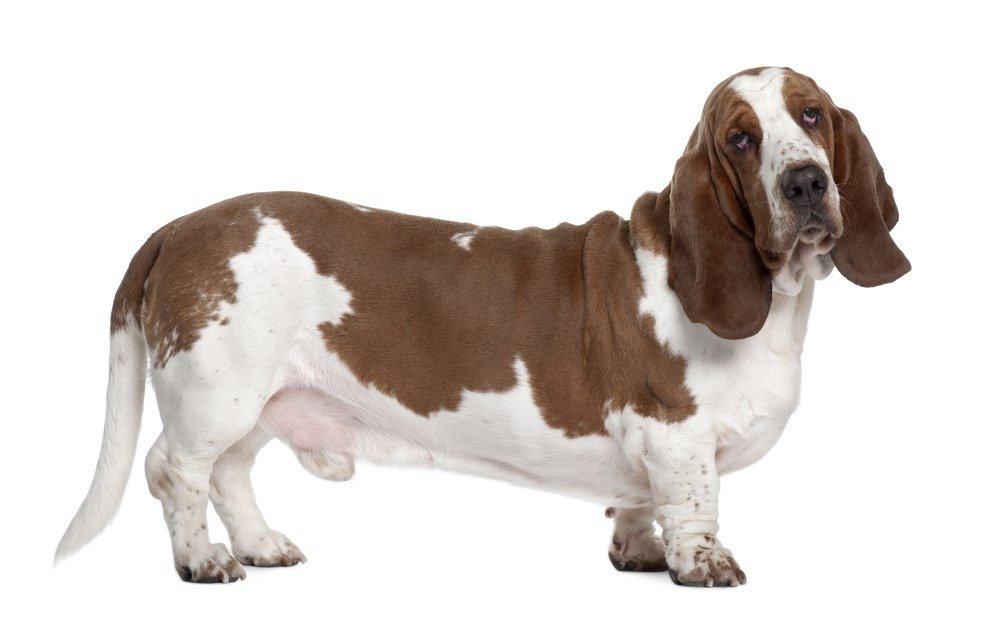
The American basset hound is the same as the European basset hound, except for the fact that it was recognized as an official Breed by the AKC much later than the European basset hound.
©Eric Isselee/Shutterstock.com
The primary difference between the American basset hound and the European basset hound lies in their ancestry and breeding. The American basset hound is the same as the European basset hound, except for the fact that it was recognized as an official Breed by the AKC much later than the European basset hound.
For example, the European basset hound originated in France sometime during the 6th century, while the American basset hound was brought from Europe to America sometime during the 1800s. However, they were both bred for the same thing, and have the same scent hound abilities as the other.
American vs European Basset Hound: Behavior

Both the European basset hound and the American basset hound are fairly vocal breeds, choosing to voice both their happiness and frustrations day in and day out!
©Bill Anastasiou/Shutterstock.com
The behavior of the American basset hound is identical to the behavior of the European basset hound. Both of these dogs are extremely friendly and personable, enjoying life in a variety of families and working situations. They can both be stubborn during training, though they work well using food motivation techniques. Finally, both the European basset hound and the American basset hound are fairly vocal breeds, choosing to voice both their happiness and frustrations day in and day out!
American vs European Basset Hound: Lifespan
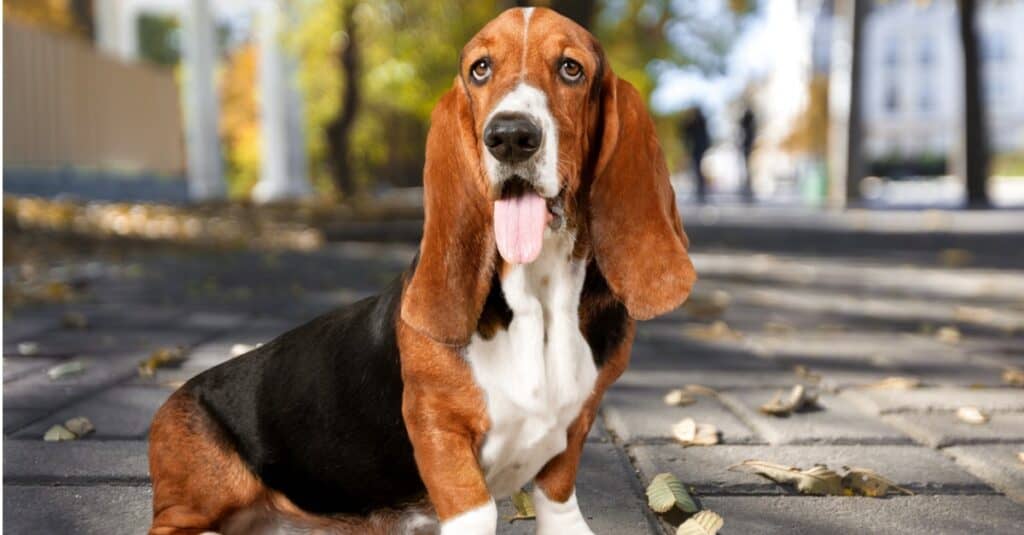
Both the American basset hound and the European basset hound live an average of 10 to 12 years, as the basset hound breed has a number of health issues that it is susceptible to.
©iStock.com/artisteer
Now that you know that the American and the European basset hound are essentially the same dog, you can no doubt assume that they have a very similar lifespan. Both the American basset hound and the European basset hound live an average of 10 to 12 years, as the basset hound breed has a number of health issues that it is susceptible to. However, with a well-rounded diet and plenty of exercise, your American or European basset hound can live a long and happy life!
How Many Types of European Bassets Are There?
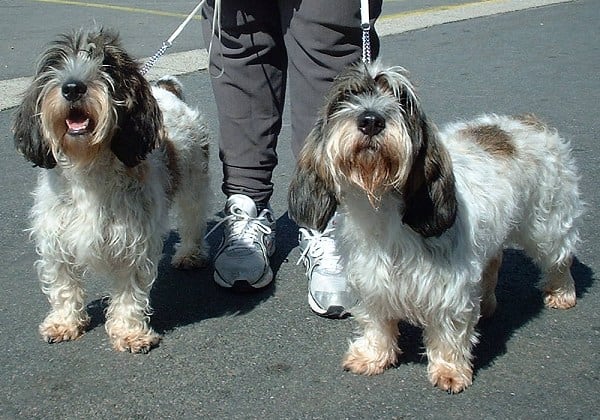
The Petit Basset Griffon Vendéen is called “Petit” or “PBGV” in the U.S., “Roughie” in the U.K., and “Griffon” or “Petit” in Denmark.
©Sannse / CC BY-SA 3.0 – License
The basset breed has been developed and utilized in Europe for centuries. There are 6 types of recognized European basset hounds and 7 more that aren’t recognized. Below is a list of the recognized and unrecognized European Basset Breeds. The recognized European basset hounds include:
- French Basset Artésien Normand: This basset, developed in France, is a short-legged variety developed to be lighter-boned and talented at hunting.
- Basset Bleu de Gascogne: Also called the Blue Gascony Basset, this hound is short-legged, long-backed, and often has a coat that is blue-ticked. This breed is rare outside of France.
- Basset Fauve de Bretagne: This basset breed originated in Brittany, France. It’s a small, short-legged scent hound with a light frame and longer legs. The coat is wired, coarse, dense, and usually red-wheaten or fawn-colored.
- Grand Basset Griffon Vendéen: Originating in the Vendée region of France, this breed is long-backed, short-legged, and has a medium-type coat that can have orange, sable, lemon, grizzle, or black markings.
- Petit Basset Griffon Vendéen: This scent hound is talented at sniffing out hares among brambles and was developed in the Vendée district of France.
- Basset Hound from Great Britain: This standard basset breed was developed in Great Britain and used for hunting.
The below European basset breeds are not officiated for competition, but nonetheless are part of the overall family:
- Alpine Dachsbracke from Austria
- Berner Niederlaufhund from Switzerland
- Jura Niederlaufhund from Switzerland
- Luzerner Niederlaufhund from Switzerland
- Schwyzer Niederlaufhund from Switzerland
- Drever from Sweden
- Westphalian Dachsbracke from Germany
The photo featured at the top of this post is © iStock.com/artisteer
Ready to discover the top 10 cutest dog breeds in the entire world?
How about the fastest dogs, the largest dogs and those that are -- quite frankly -- just the kindest dogs on the planet? Each day, AZ Animals sends out lists just like this to our thousands of email subscribers. And the best part? It's FREE. Join today by entering your email below.
Thank you for reading! Have some feedback for us? Contact the AZ Animals editorial team.






